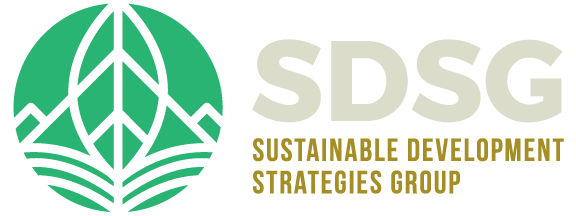What is Sustainable Development?
1. Sustainable Development is development that meets the needs of the present without compromising the ability of future generations to meet their own needs.
2. Introduction A Presentation: What is sustainable development?
3. Components
a. Transparency
i. Extractive Industries Transparency Initiative http://eiti.org/
ii. Global Reporting Initiative, Reporting Framework and G3 Guidelines http://www.globalreporting.org/ReportingFramework/ReportingFrameworkDownloads/
iii. World Business Council for Sustainable Development, Strategic challenges for business in the use of corporate responsibility codes, standards, and framework (including compilation of applicable standards) http://www.wbcsd.org/DocRoot/WMfheaR1Om4hTqMOb8M3/accountability-codes.pdf
b. Public Participation
i. Agenda 21 (1992) http://www.un.org/esa/dsd/agenda21/res_agenda21_00.shtml
ii. Rio Declaration (1992) http://www.unep.org/Documents.multilingual/Default.asp?DocumentID=78&ArticleID=1163
iii. Luke Danielson. “Public Participation in Environmental Decision Making.” International Resources Law: Today’s Oil, Gas and Mining Projects (Rocky Mountain Mineral Law Foundation Mineral Law Series). Volume 1997, no 2: Part 11
iv. Aarhus Convention http://www.unece.org/env/pp/treatytext.htm
v. OAS, Civil Society and Indigenous Peoples Participation http://www.oas.org/dsd/MinisterialMeeting/ReunionInterAm_eng_Publicpar.htm
c. Intergenerational Equity
i. Brundtland Report http://www.un-documents.net/wced-ocf.htm
ii. Janna Thompson, Intergenerational Equity: Issues in the Allocation of Social Resources Between this Generation and the Next (Report to Australian Parliament 2003, Research Paper no. 7 2002-03) http://www.aph.gov.au/Library/pubs/rp/2002-03/03RP07.htm
iii. Intergenerational Equity, Stanford Encyclopedia of Philosophy http://plato.stanford.edu/entries/justice-intergenerational/
d. Equity between Developed and Developing Countries
i. Brundtland Report http://www.un-documents.net/wced-ocf.htm
ii.Agenda 21 (1992) http://www.un.org/esa/dsd/agenda21/res_agenda21_00.shtml
iii. Measuring Changes in Consumption and Production Pattern (United Nations Commission on Sustainable Development 1998) http://www.un.org/documents/ecosoc/cn17/1998/background/ecn171998-mccpp59text.htm
iv. Common but Differentiated Responsibilities
1. Rio Declaration (1992) http://www.unep.org/Documents.multilingual/Default.asp?DocumentID=78&ArticleID=1163
2. Montreal Protocol on Substances that Deplete the Ozone Layer http://www.unep.org/ozone/pdfs/Montreal-Protocol2000.pdf
3. United Nations Framework Convention on Climate Change http://unfccc.int/resource/docs/convkp/conveng.pdf
4. The Principle of Common But Differentiated Responsibilities: Origins and Scope, CISDL legal brief for the World Summit on Sustainable Development 2002, Johannesburg, 26 August, http://www.cisdl.org/pdf/brief_common.pdf
e. Balance. Three Pillars of Development: Economic, Environmental and Social
i. The Future of Sustainability: Rethinking Environment and Development in the Twenty-first Century (Report of the IUCN Renowned Thinkers Meeting) (IUCN 2006) http://cmsdata.iucn.org/downloads/iucn_future_of_sustanability.pdf
ii. Luke Danielson. Mining Minerals and Human Welfare: The Tasks Ahead (Keynote Address to the Meeting of Mines Ministers of APEC). APEC, June 2004.
f. Mandates of funding agencies
i. Luke Danielson. Evolution of Global Standards. The Growing Role of the World Bank Group,” in Bastida, Walde and Warden-Fernandez (eds.), International and Comparative Mineral Law and Policy. Kluwer Law International: 2005.
ii. World Bank Extractive Industries Review http://go.worldbank.org/PMSHHP27M0
iii. IFC/World Bank Environmental, Health and Safey Guidelines
iv. Jay Hair, Benjamin Dysart and Luke Danielson. Pangue hydroelectric project (Chile); An Independent Review of the International Finance Corporation’s Compliance with Applicable World Bank Group Environmental and Social Standards, April 4, 1997.
4. Sustainable Development and Mining
b. Cecilia Dalupan. Mining and Sustainable Development: Insights from International Law. International Comparative Mineral Law and Policy.
c. IFC/World Bank Environmental, Health and Safey Guidelines
d. OECD Guidelines for Multinational Enterprises, http://www.oecd.org/document/28/0,2340,en_2649_34889_2397532_1_1_1_1,00.html
e. David Chambers, Catherine Coumans & Marta Miranda. Framework for Responsible Mining: A Guide to Evolving Standards. October 4, 2005.
f. Luke Danielson. Architecture for Change: An Account of Mining, Minerals, and Sustainable Development Project, History.” Global Public Policy Institute. Berlin: Global Public Policy Institute, 2006. www.gppi.net
g. Breaking New Ground (IIED), http://www.iied.org/sustainable-markets/key-issues/business-and-sustainable-development/mmsd-final-report
5. Sustainable Development and Water
a. 3rd United Nations World Water Development Report: Water in a Changing World, http://www.unesco.org/water/wwap/wwdr/wwdr3/tableofcontents.shtml
b. U.N. Convention on the Non-Navigational Uses of International Watercourses, http://untreaty.un.org/ilc/texts/instruments/english/conventions/8_3_1997.pdf
c. Dams and Development: A New Framework for Decisionmaking, The Report of the World Commission on Dams, link to http://www.dams.org/report/
d. Corporate Water Accounting: An Analysis of Methods and Tools for Measuring Water Use and Its Impacts (Pacific Institute 2010),
e. Climate Change and the Global Water Crisis: What Businesses Need to Know and Do (Pacific Institute 2009), http://pacinst.org/reports/ungc_climate_water/report.pdf
f. Transboundary water and climate report. UNDERSTANDING AND REDUCING THE RISKS OF CLIMATE CHANGE FOR TRANSBOUNDARY WATERS, Heather Cooley, Juliet Christian-Smith, Peter H. Gleick, Lucy Allen, and Michael Cohen (Pacific Institute 2009),

